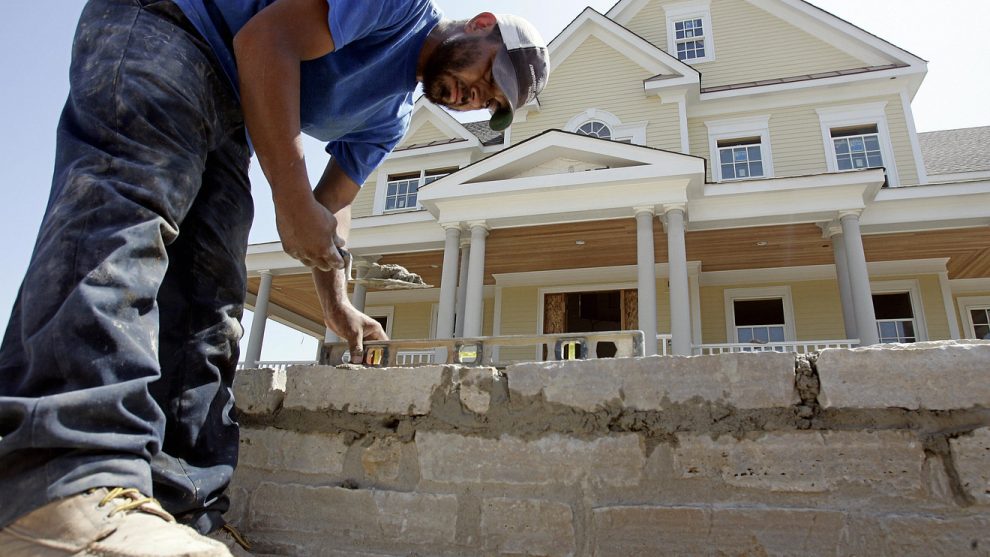
Homeowners are pulling back on their spending on house improvements.
Growth in remodeling spending is expected decline in half of America’s largest cities this year, a study released this week by Harvard University’s Joint Center for Housing Studies found.
In 29 of the 49 cities studied, spending growth on remodeling is expected drop relative to 2018 levels. In 22 cities, it will hit its lowest point in three years.
In the greater Washington, D.C., area, for example, the annual growth rate in home-improvement spending was 5% in the final quarter of 2018, and it’s expected fall to 2% by the final quarter of 2019.
In 29 of the 49 cities studied, spending growth on remodeling is expected drop relative to 2018 levels. In 22 cities, it will hit its lowest point in three years.
In Boston, spending growth is expected to plateau in the fourth quarter of 2019, compared to 2% growth in the last quarter of 2018.
Some see the trend as the result of a cooling housing market. With record-high prices in some cities, sales are starting to slow down.
“We’ve been calling for 2019 to see a slowdown in remodeling,” Robert Dietz, the chief economist at the National Association of Home Builders, told MarketWatch.
The decline in home sales this year and the rise in interest rates last year could be fueling the dip in remodeling spending growth, Dietz said.
Interest rates have dropped during 2019, but homeowners may just now be feeling the “indirect and lagged” effects of last year’s rate increases, Dietz said.
“People feel like they have less money,” Dietz told MarketWatch. With less money, people are less likely to invest in home improvements.
Remodeling typically occurs before or after a home is sold
“People either want to make the home fit their needs when they buy it or make some improvements before they try to sell,” Danielle Hale, the chief economist at Realtor.com, told MarketWatch.
(Realtor.com is operated by News Corp NWSA, +0.35% subsidiary Move Inc., and MarketWatch is a unit of Dow Jones, which is also a subsidiary of News Corp.)
The housing market got off to a slow start in 2019, with a 7% drop in new home sales in January. Existing home sale fell for the second straight month in April and the National Association of Realtors says it expect sales to stagnate this year.
Despite the overall slowdown in growth, the Harvard study also found that no city studied saw a decline in remodeling spending amounts. And remodeling growth is, in fact, rising in some parts of the nation, including Orlando and Las Vegas.
In those areas, “remodeling permitting, house prices, and home-building have picked up,” said Elizabeth La Jeunesse, a senior research analyst at the Joint Center’s Remodeling Futures Program.
An aging population could lead to more remodeling
There are signs that remodeling will pick up over the long-term: people are moving less.
“Short term, this could hurt the remodeling market. But over the long run, this builds up demand for structural changes as kids move out and other changes occur,” Dietz said.
By 2035, there will be 78 million people over the age of 65 in the U.S. and 76.7 million under the age of 18, says a March 2018 study from the U.S. Census Bureau. This will mark the first time in U.S. history older individuals outnumber children.
The aging population combined with the fact that Americans are more likely to retire in the same home they lived in while working is likely to bolster remodeling spending.
“There will be a lot of opportunity to make homes more fitting for older individuals,” Hale said.
“The aging of the U.S. housing stock has been a boon to the home improvement industry,” helping to lift the remodeling market to nearly $425 billion in 2017, up from $398 billion the year before, according to the latest estimates from the Joint Center for Housing Studies.
With new construction still slow to recover from historic lows, almost 80% of the country’s 137 million homes are now at least 20 years old and 40% are at least 50 years old, a separate report by Harvard University found.
Some home renovations make financial sense
Some changes add more value to the property than others.
Garbage-door replacements, which cost an average of $3,611, and minor kitchen remodels, which typically fall just above $22,000, each generally return over 80% of their cost, according to Remodeling Magazine’s Cost vs. Value report.
“Adding a room to a home can add real value,” Dietz said.
Kitchen upgrades can pay dividends. Homes listings that touted premium kitchen-related features sold for 30% or more above the expected price, an April 2019 report by Zillow Z, +4.40% ZG, +4.49% found.
Steam ovens in particular seemed to be a hit with buyers; they netted a 34% sales premium, higher than any other feature, Zillow found.
On the other hand, installing a pool, which is expensive to maintain and could present a hazard to young children,and upgrading a master bedroom, which tends to come with a high price tag, are less likely to pay off in the long-run relative to the price of installation, according to HGTV.









